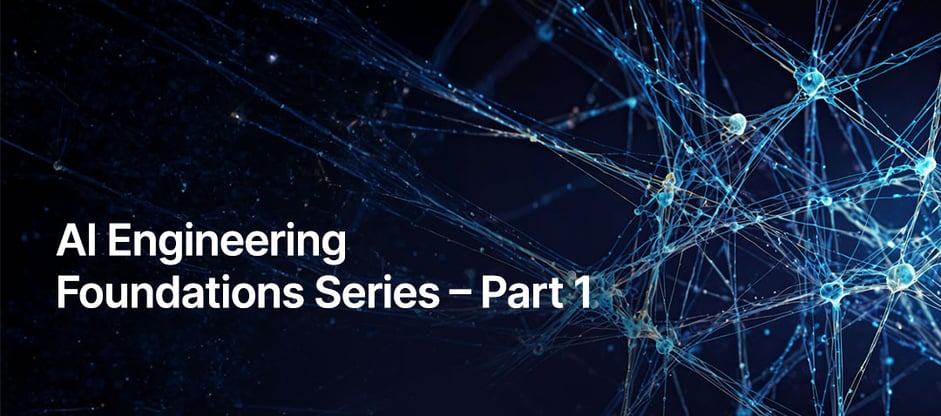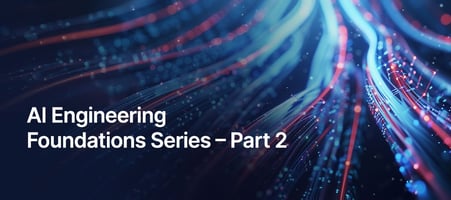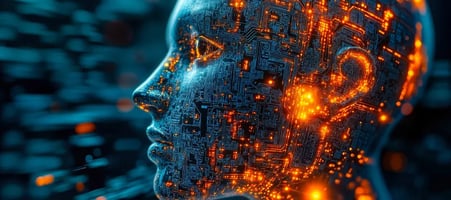Why Every Modern Enterprise Needs an AI Engineering Mindset

In today’s data-driven world, apart from thinking about “what to build,” leading enterprises are also rethinking how to build and scale intelligence into their businesses. This transformation requires a fundamentally new AI Engineering mindset.
But how does this mindset differ from traditional software engineering, and why does it matter for your enterprise’s bottom line?
The conventional software engineering mindset: rules, predictability, and determinism
For decades, software engineering has served as the backbone of digital transformation. The process is familiar and rigorous: business problems are broken down into deterministic rules, encoded as if-then logic, and executed reliably at scale.
Strengths of the Software Engineering Mindset
- Predictable outcomes: Logic and behaviors are explicitly defined in code.
- Reliability: Rigorously tested systems do what they are programmed to do.
- Repeatability: Deploy once, run anywhere with consistent results.
- Traceability: It’s relatively straightforward to debug or audit why a particular outcome occurred.
Typical Application Areas:
- Financial transaction processing
- Order management systems
- Inventory control
- Automated billing and reconciliation
In software engineering, problems are typically solved by defining clear, step-by-step logic. If you know all the rules, then you can write the code to cover every scenario.
The AI Engineering mindset: learning, adaptivity, and probabilistic reasoning
Unlike conventional software, AI systems learn patterns from data, make decisions under uncertainty, and adapt over time. They’re engineered to interpret, predict, or generate outcomes where the world is full of ambiguity.
Core Tenets of the AI Engineering Mindset:
- Data-driven: Solutions learn from historical data rather than just static rules.
- Probabilistic Outputs: Answers are often not deterministic but involve confidence levels.
- Generalization: AI handles exceptions or novel scenarios outside original programming.
- Continuous Improvement: Performance is monitored, and models are retrained for changing realities.
- Explainability & Ethics: Special care is given to understanding, governing, and auditing decision logic.
Problems Suited to AI Engineering:
- Diagnosing diseases from unstructured clinical notes
- Identifying fraudulent transactions through hidden patterns
- Understanding customer sentiment in conversations or reviews
- Automating document classification and extraction
AI system design needs a new mindset, focusing on experimentation, monitoring, and lifecycle management.
Why you need both mindsets: an integrated engineering approach for modern problems
In a modern enterprise, the two disciplines are not mutually exclusive. Instead, the greatest business value is found at their intersection. Most real-world problems cannot be solved effectively by one approach alone.
Let’s break this down with two examples:
Example 1: Insurance Claims Processing
High-level business objective: Automate the intake, assessment, and approval of insurance claims to reduce turnaround time and costs.
Sub-problems & Appropriate Mindset:
- Document ingestion and data extraction from claim forms: Applying the AI Engineering Mindset: Use OCR and NLP models to extract data from varied document formats.
- Business rule validation (Is the claim above policy limits? Are all mandatory fields present?) Software Engineering Mindset: Hard-coded validation using deterministic logic and business rules.
- Fraud risk scoring AI Engineering Mindset: Machine Learning (ML) models detect subtle, non-obvious fraud patterns.
- Payment processing Software Engineering Mindset: Secure and auditable execution of financial transactions.
In this workflow, AI systems handle ambiguity-laden, variable data (documents, fraud risk). Conventional code executes rigid, rules-based operations (compliance checks, payment).
Example 2: Customer Support Automation
High-level business objective: Deliver automated, efficient customer support that balances accuracy, compliance, and a positive user experience.
Sub-problems & Appropriate Mindset:
- Understanding customer intent from free-text queries: AI Engineering Mindset: NLP models classify and extract intent from natural language.
- Routing tickets to the right department based on detected intent and business logic: Software Engineering Mindset: Workflow engines apply deterministic routing rules.
- Generating answers to FAQs or product information: AI Engineering Mindset: Retrieval-Augmented generation (RAG) or LLMs for knowledge-based queries.
- Enforcing privacy and compliance checks before data is shared: Software Engineering Mindset: Access control and audit logic.
Once again, the AI engineering mindset shines where patterns and language must be deciphered, while software engineering ensures compliance and reliability.
Embracing the AI Engineering mindset: your next competitive advantage
According to Gartner, organizations adopting an “AI-first” approach too often discover that deploying a prototype model is easy, but operationalizing, governing, and improving these systems at enterprise scale is the real challenge. You need engineering frameworks that integrate experimentation, monitoring, explainability, compliance, continuous deployment, and the ability to switch between AI and traditional logic, as needed.
In summary:
- Conventional software engineering delivers reliability and control for rules-based, deterministic problems.
- AI engineering enables adaptivity and insight for complex, ambiguous, or data-rich challenges.
- Both disciplines must work together to build robust, safe, and business-aligned enterprise solutions.
The most successful enterprises develop not just “AI teams” or “IT teams,” but blended squads that can decompose every business need into its structured and ambiguous parts, applying the best tool for each sub-problem.
Interested in exploring how your business can adopt an AI Engineering Mindset? Reach out to our team for an executive workshop or readiness assessment.

.webp?height=200&name=Covasant_Blog_Banner_With_Author%20(1).webp)


